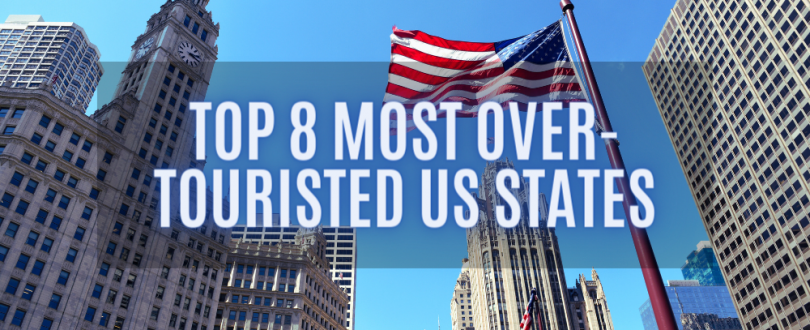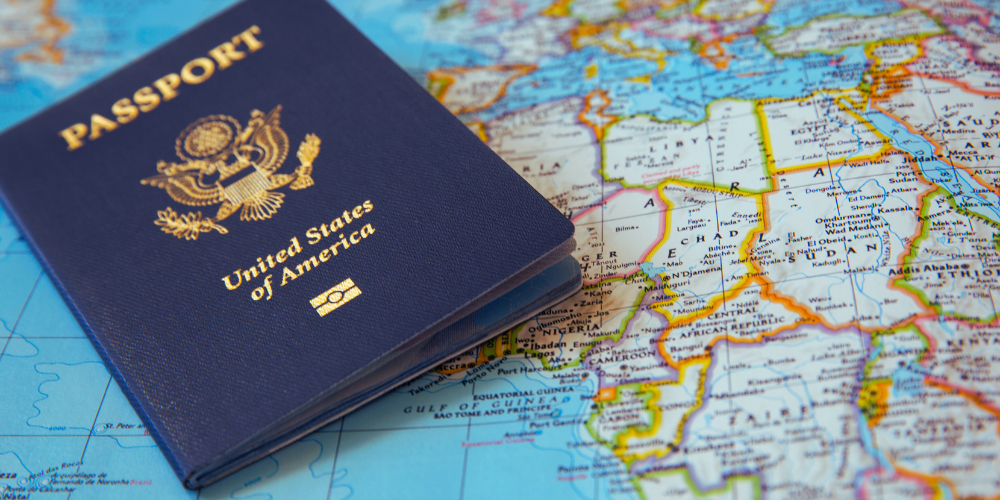
Traveling is one of life’s greatest pleasures, offering the opportunity to explore new places, experience different cultures, and create unforgettable memories. However, the surge in tourism has led to a phenomenon known as over-tourism, where the number of visitors overwhelms local infrastructure, the environment, and the community. In this post, we will delve into the top eight most over-touristed US states, highlighting the challenges they face and offering tips for responsible tourism.
Understanding Over-Tourism
Over-tourism occurs when popular destinations receive more visitors than they can sustainably accommodate. This influx can strain local resources, damage natural environments, and disrupt the lives of residents. Recognizing the signs of over-tourism and taking steps to mitigate its impact is crucial for preserving these destinations for future generations.

1. California
California, known for its diverse landscapes and iconic attractions, is a magnet for tourists. From the bustling streets of Los Angeles and San Francisco to the natural wonders of Yosemite National Park, the state experiences significant visitor traffic year-round.
- Issues:
- Traffic congestion in major cities.
- Environmental damage to natural attractions.
- Rising housing costs due to short-term rentals.
- Local Responses:
- Implementing visitor caps in national parks like Yosemite to protect natural habitats.
- Promoting lesser-known destinations such as Big Sur and the northern coastline.
- Encouraging sustainable tourism practices through education campaigns.
2. Florida
Florida’s sunny beaches, theme parks, and vibrant cities make it a top travel destination. Places like Orlando, Miami, and the Florida Keys draw millions of visitors annually.
- Issues:
- Overdevelopment in coastal areas.
- Strain on water resources, especially in the Florida Keys.
- Environmental degradation, including damage to coral reefs and natural habitats.
- Local Responses:
- Promoting eco-friendly tourism and conservation efforts in the Everglades and coral reefs.
- Implementing regulations to manage coastal development and protect natural areas.
- Encouraging tourists to visit lesser-known locations like the Gulf Coast and northern Florida.
3. New York
New York State, particularly New York City and Niagara Falls, is a hub for international and domestic tourists. The allure of Times Square, Central Park, and other landmarks keeps visitor numbers high.
- Issues:
- Overcrowding in popular tourist spots.
- Rising costs of living and housing in NYC.
- Infrastructure strain, particularly on public transportation.
- Local Responses:
- Promoting tourism in upstate New York, including the Adirondacks and Finger Lakes.
- Investing in public transportation improvements to manage tourist flow.
- Encouraging visits during off-peak times to reduce crowding.
4. Hawaii
Hawaii’s breathtaking islands, including Honolulu, Maui, and Kauai, are dream destinations for many. The state’s unique culture and natural beauty attract a significant number of tourists.
- Issues:
- Environmental impact, including beach erosion and damage to ecosystems.
- Cultural disruption and displacement of local residents.
- Water shortages due to high tourist demand.
- Local Responses:
- Educating visitors on respecting Hawaiian culture and customs.
- Implementing limits on short-term rentals to preserve housing for residents.
- Promoting sustainable tourism practices and conservation efforts.
5. Nevada
Nevada, home to Las Vegas and Lake Tahoe, sees millions of visitors drawn to its entertainment and natural attractions.
- Issues:
- High water usage, particularly in Las Vegas.
- Waste management challenges due to large tourist volumes.
- Environmental impact on natural areas like Lake Tahoe.
- Local Responses:
- Encouraging water conservation practices in hotels and casinos.
- Enhancing recycling and waste management programs.
- Promoting lesser-known attractions such as Great Basin National Park.
6. Massachusetts
Massachusetts, with its rich history and cultural landmarks, is a favorite among tourists. Boston, Cape Cod, and Salem are particularly popular.
- Issues:
- Historical preservation challenges in cities like Boston.
- Traffic congestion during peak tourist seasons.
- Rising housing costs in popular areas.
- Local Responses:
- Preserving historical sites through state and local initiatives.
- Promoting public transportation and reducing reliance on cars.
- Encouraging visits to lesser-known historical towns and attractions.
7. Arizona
Arizona’s natural wonders, such as the Grand Canyon and Sedona, attract large numbers of visitors seeking adventure and scenic beauty.
- Issues:
- Environmental degradation and trail erosion in popular hiking areas.
- Water scarcity issues, particularly in desert regions.
- Overcrowding at major attractions like the Grand Canyon.
- Local Responses:
- Limiting visitor numbers in sensitive areas to protect natural habitats.
- Promoting eco-friendly tourism and conservation efforts.
- Encouraging visits to lesser-known parks and natural sites.
8. Colorado
Colorado, known for its outdoor activities and stunning landscapes, sees heavy tourist traffic in cities like Denver and natural sites like Rocky Mountain National Park.
- Issues:
- Trail overcrowding and environmental impact in popular hiking and skiing areas.
- Rising housing costs in tourist-heavy regions.
- Strain on local infrastructure and resources.
- Local Responses:
- Encouraging off-season travel to reduce peak-time pressure.
- Investing in trail maintenance and environmental protection programs.
- Supporting local housing initiatives to balance tourism and resident needs.
Responsible Tourism Tips
While exploring these over-touristed states, it’s essential to travel responsibly to minimize your impact:
- Choose Alternatives: Consider visiting lesser-known destinations within the state to reduce crowding.
- Support Local: Spend your money at local businesses and respect local customs and traditions.
- Travel Off-Peak: Visit popular attractions during off-peak times to avoid large crowds and reduce pressure on local resources.
- Reduce Footprint: Practice Leave No Trace principles by cleaning up after yourself and minimizing your environmental impact.
Being aware of over-tourism and its impacts is the first step towards more responsible travel. By making conscious choices, we can help preserve these beautiful destinations for future generations to enjoy. Share your experiences and tips for responsible tourism in the comments, and don’t forget to subscribe for more travel insights!

